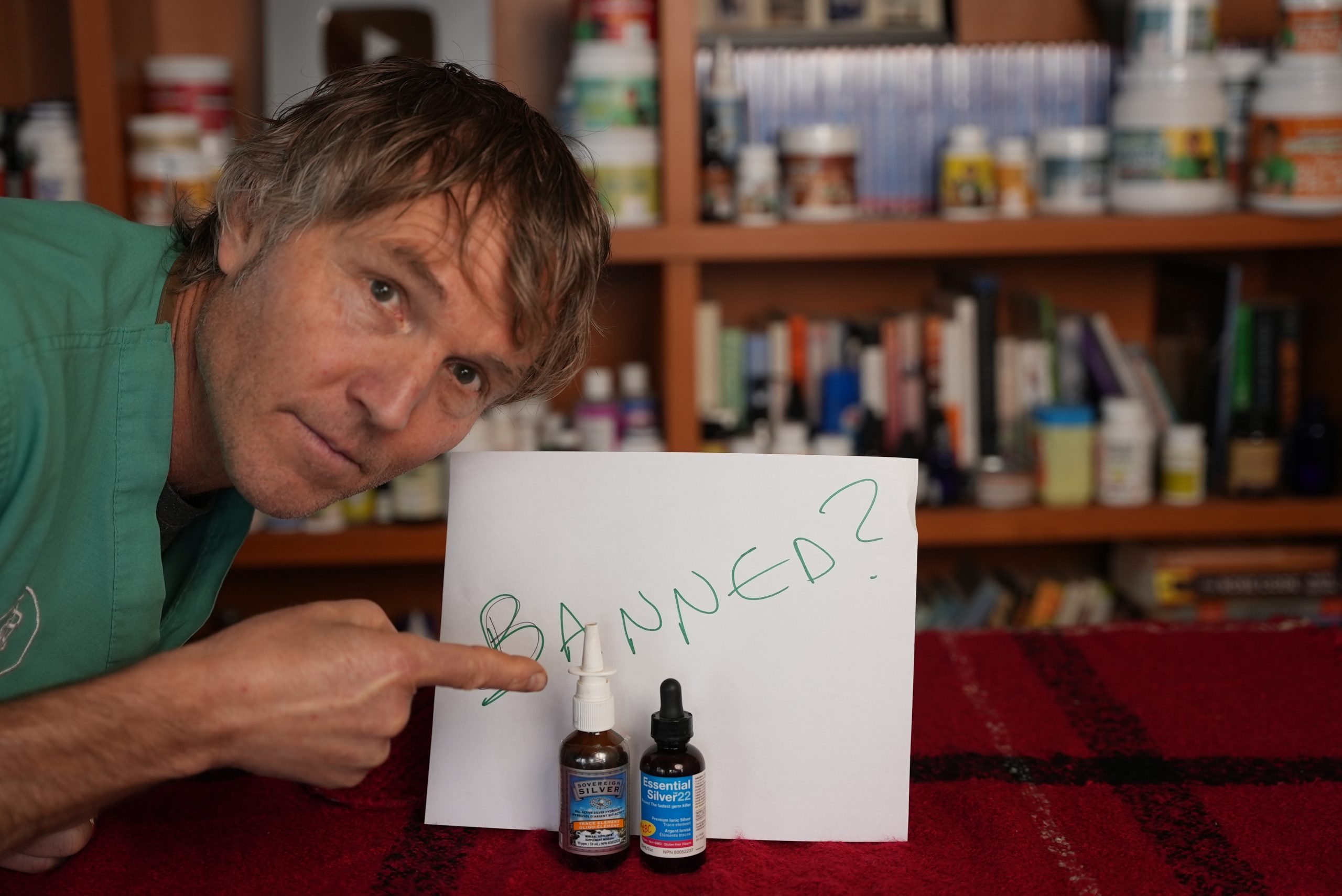What YouTube Won’t Tell You About Colloidal Silver – Is It Safe for Pets?

Is Colloidal Silver Safe for Pets?
Hi, I’m Dr. Andrew Jones, and today we’re diving into a hot topic in the world of pet health—colloidal silver. Is it really dangerous, as the FDA claims, or is it a useful remedy for pets, as many alternative health practitioners suggest? Let’s explore the facts together.
What Is Colloidal Silver?
Many moons ago, I came across colloidal silver as an alternative remedy for our pets. Colloidal silver is essentially microscopic particles of silver suspended in water, and it’s incredibly dilute—think parts per million. If you were to imagine one drop of colloidal silver in an entire room, that’s the concentration we’re talking about. Despite its minuscule amount, the FDA has raised concerns about its safety.
The FDA’s Concerns:
According to the FDA, colloidal silver can be harmful. They warn that silver can be toxic to the body in several ways:
- Argyria: A bluish discoloration of the skin that can happen with excessive silver consumption.
- Organ Damage: In high doses, silver can affect the brain, nervous system, and organs, including the kidneys, liver, and heart.
It sounds pretty scary, right? However, I want to emphasize that these concerns primarily come from large doses, often in amounts far beyond what’s used in colloidal silver products for pets.
The Reality of Colloidal Silver:
When used properly, the amount of silver in colloidal silver is incredibly small. I’ve seen no clinical side effects when it’s given in recommended doses. It’s much like any other substance: if you overdose, you’ll likely experience issues. For instance, if you were to give your dog 1000 times the recommended dose of colloidal silver, you might see side effects. But the same can happen with over-the-counter medications like aspirin—take 10 times the recommended dose, and you’re likely to experience vomiting, diarrhea, or even organ failure.
Personally, if you were to ask me what’s more dangerous—aspirin or colloidal silver? I’d say aspirin, hands down.
Research on Colloidal Silver:
Interestingly, studies have shown that when colloidal silver is used at the suggested doses, it’s actually very safe. A paper titled The Evaluation of Acute Toxicity of Colloidal Silver Nanoparticles concluded that the risk of toxicity is minimal when used in recommended amounts. Even when the dose is increased several times over, it remains safe. The only time they found it to be toxic was when given in massive amounts—think 1000 times the advised dose.
Does Colloidal Silver Actually Help?
So, is colloidal silver just a placebo, or does it have some actual benefits? Some studies suggest it could be helpful. For example, one study on the Antibacterial Effects of Colloidal Silver found that it can be effective against antibiotic-resistant bacteria. This makes it a valuable alternative for treating certain infections, especially in today’s world of rising antibiotic resistance.
With its high safety margin and potential antibacterial effects, colloidal silver seems to have some merit. Given these facts, I’m not sure why the FDA is issuing such strong warnings against it.
How Colloidal Silver Is Used:
In my veterinary practice, I’ve seen clients use colloidal silver with great success for various conditions. Here’s how it’s commonly used:
- Topically for Skin and Wound Infections: If your pet has a wound or infection, you can apply 2-3 drops of colloidal silver directly onto the wound 2-4 times a day for 5-7 days.
- For Eye Infections: You can put 1-2 drops directly into the affected eye 4 times a day for 5 days.
- For Ear Infections: Two to four drops can be applied into the ear twice a day for 5-7 days.
- For Cold and Flu Symptoms (e.g., Kennel Cough in dogs, Cat Flu in cats): Give two drops per 10 lbs of body weight, twice daily.
I’ve used colloidal silver myself, especially when Tula had a persistent wound on her nose. After using it four times a day for five days, the wound healed up nicely.

You Decide What’s Best for Your Pet:
Unfortunately, I’m not allowed to publicly recommend colloidal silver for pets due to the FDA’s stance. But the good news is—you’re in charge of your pet’s health. If you find colloidal silver at a natural health store and believe it could help with your pet’s infection, wound, or cold, it’s your right to use it.
As pet parents, it’s important to make informed decisions. I always encourage my clients to choose treatments with a high safety margin. In the case of colloidal silver, the safety profile is pretty solid when used appropriately.
Conclusion:
At the end of the day, you are the one making the health care decisions for your pet. My advice is to choose remedies that have a proven safety record, are effective, and are reasonably priced. Colloidal silver seems to fit these criteria, but like any treatment, it’s important to use it wisely.
Thank you for watching! If you’d like more information on natural health options for your pets, be sure to subscribe to my channel. Click the link below to receive a free copy of my book, and stay informed about the best ways to care for your pets.
Final Thoughts:
Is colloidal silver toxic or beneficial? It’s ultimately up to you to decide. I’ll continue to advocate for treatments that are both safe and effective—because your pet’s health matters most.





I was very happy that you made this video just when I’m really needing help with 2 of my 5 dogs. I’ve been watching your videos for years! So helpful! I really want to try colloidal silver but I don’t know which PPM to get. Most on Amazon are 10 PPM. A few others are 20, 30 or 50 PPM. One dog is 9 lbs and the other is 60 lbs. I wanted to try topically on some infected lipomas through licking. But not sure which PPM with what dosage.
The 60 lb dog has already gone through a round of antibiotics & topicals from vet earlier this year and it didn’t work and she keeps infecting them cause they bother her. I’ve tried other things too. But so far, no luck. They are 11 yrs old, so I’m not wanting to put them under any anesthesia at this age for benign procedures.
What PPM works with your dosage instructions? Thank you for all you do!